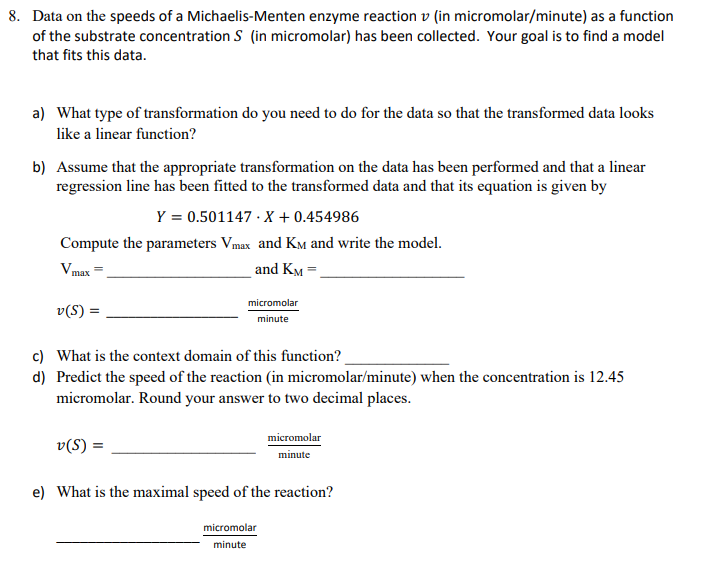8. Data on the speeds of a Michaelis-Menten enzyme reaction v (in micromolar/minute) as a function of the substrate concentration S (in micromolar) has been collected. Your goal is to find a model that fits this data. a) What type of transformation do you need to do for the data so that the transformed data looks like a linear function? b) Assume that the appropriate transformation on the data has been performed and that a linear regression line has been fitted to the transformed data and that its equation is given by Y = 0.501147.X + 0.454986 Compute the parameters Vmax and KM and write the model. Vmax= and KM = v(S) = micromolar minute c) What is the context domain of this function? d) Predict the speed of the reaction (in micromolar/minute) when the concentration is 12.45 micromolar. Round your answer to two decimal places. v(S) = micromolar minute e) What is the maximal speed of the reaction? micromolar minute
Catalysis and Enzymatic Reactions
Catalysis is the kind of chemical reaction in which the rate (speed) of a reaction is enhanced by the catalyst which is not consumed during the process of reaction and afterward it is removed when the catalyst is not used to make up the impurity in the product. The enzymatic reaction is the reaction that is catalyzed via enzymes.
Lock And Key Model
The lock-and-key model is used to describe the catalytic enzyme activity, based on the interaction between enzyme and substrate. This model considers the lock as an enzyme and the key as a substrate to explain this model. The concept of how a unique distinct key only can have the access to open a particular lock resembles how the specific substrate can only fit into the particular active site of the enzyme. This is significant in understanding the intermolecular interaction between proteins and plays a vital role in drug interaction.

Trending now
This is a popular solution!
Step by step
Solved in 3 steps with 3 images




